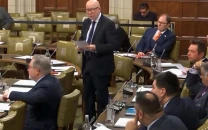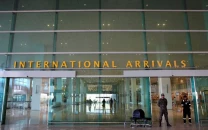Applying for UK fast-track residency: a step by step guide for high-earners and innovators
UK unveils 3-year residency fast-track for professionals earning over £125k

The UK government has recently unveiled a new fast-track pathway to residency, specifically designed for high earners, as Prime Minister Keir Starmer seeks to retain skilled workers within the City of London and other key sectors amid a broader clampdown on migration. This move enables certain highly paid professionals and entrepreneurs to significantly reduce the time required to apply for indefinite leave to remain (ILR), the primary step toward British citizenship.
The announcement by Home Secretary Shabana Mahmood outlined that settling in the UK is a privilege, not a right, and must be earned. The proposals represent a shift away from earlier plans that suggested doubling the standard ILR application period to 10 years.
If you are a Pakistani seeking the quickest route to permanent status in the UK, follow these steps to determine your eligibility and prepare your application:
Step one: Establish your visa and earnings criteria
Determine if you qualify for the fastest path (three years) or the standard five-year path:
1. Check for the three-year fast-track residency: You may apply for ILR after three years if you are a visa-holder earning more than £125,000 ($163,000).
2. Check for alternative fast-track visas: The quicker route to residency is also open to entrepreneurs who hold Global Talent or Innovator Founder visas.
3. Check for the five-year standard path: If your salary is between £50,000 and £125,000, you must wait five years, in line with current provisions.
4. Note the baseline requirement: For most other visa-holders, the proposed new baseline time period required to apply for ILR is 10 years.
Read: Britain to make refugee status temporary under asylum overhaul
Step two: Ensure you meet core conduct and financial requirements
All applicants face tighter conditions regarding financial history and criminal records. Applicants must demonstrate they meet the following baseline requirements:
1. Maintain a clean criminal record.
2. Pay payroll tax contributions for the past three years.
3. Owe no debt to the state, including debts to the Home Office or the National Health Service (NHS).
Step three: Meet language proficiency standards
You must provide proof of your English-language proficiency.
If you can speak English to a higher standard than A-level, you will see the 10-year baseline period reduced to nine years.
(Note that this benefit may not apply to those already on the three- or five-year tracks, but high-earners and Innovator/Global Talent visa holders face tighter conditions on English-language skills).
Step four: Be aware of potential penalties
The Home Office plans to introduce penalties which will be added to the baseline time period a person must wait. Ensure you have not taken actions that would delay your application:
1. Do not claim benefits: If a person has been claiming benefits for fewer than 12 months, they will receive a five-year penalty added to their waiting time.
2. Avoid prolonged welfare claims: Those claiming welfare for longer than 12 months will receive a 10-year penalty.
3. Do not arrive illegally: Any person who arrives through an illegal route, such as on small boats, will receive a penalty of 20 years on top of their 10-year baseline.
Step five: Check for special circumstances
While the high-earner route is a major change, certain groups remain on the five-year plan, or are excluded from the new system altogether:
1. Public Service Workers: If you work in public services above a certain level of seniority, such as doctors, nurses, and some education staff, you will remain on a five-year plan.
2. Exclusions: The new system will not apply to those who came to the UK fleeing persecution in Hong Kong on the British National (Overseas) route. It also does not apply to the family of British citizens. Those eligible for the Windrush Scheme or the EU Settlement Scheme will be considered separately.
The fast-track plan appears to have largely eased fears among the best-paid white-collar workers who had relocated to Britain. For businesses, the move will help reduce immigration spending on highly paid talent.
Note: This step-by-step guide is based on the changes to the UK immigration system laid out by Home Secretary Shabana Mahmood



















COMMENTS (1)
Comments are moderated and generally will be posted if they are on-topic and not abusive.
For more information, please see our Comments FAQ